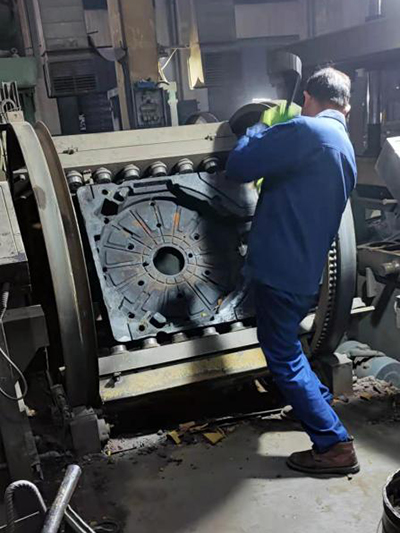The Iron Sand Casting Process An Overview
Iron sand casting is a fascinating method of producing intricate metal components using iron-rich sand as a primary material. This process has a rich history and plays an essential role in modern manufacturing, especially in industries that demand high-strength components at relatively low costs. In this article, we will explore the iron sand casting process, its advantages, applications, and future prospects.
What is Iron Sand Casting?
Iron sand casting, often referred to as sand casting, is a versatile and widely used manufacturing process. It involves creating a mold from a mixture of iron sand and a binding agent, then pouring molten iron into the mold to create the desired shape. The process usually includes several steps preparing the mold, melting the iron, pouring it into the mold, and finally removing the casting once it has cooled and solidified.
The Process
1. Pattern Creation The first step involves creating a pattern, which is often made from wood, metal, or plastic. This pattern is a replica of the final product and is essential for shaping the mold. The pattern is usually slightly larger than the final product to ensure the casting can be removed easily.
2. Mold Preparation The next step is preparing the mold. Iron sand, combined with a binding agent, is compacted around the pattern to form the mold. This mixture is then heated or treated to strengthen it, ensuring it can withstand the pouring of molten iron.
3. Melting the Iron The iron is melted in a furnace, reaching temperatures around 1500°C (2732°F). The molten iron is often alloyed with other elements to enhance its properties, making it suitable for specific applications.
4. Pouring Once the iron is molten and the mold is ready, the liquid iron is poured into the mold cavity. This step requires precision, as any spillage or improper filling can lead to defects in the final product.
5. Cooling After pouring, the mold is allowed to cool, which typically takes several hours. During this time, the molten iron solidifies and takes on the shape of the mold.
iron sand casting process

6. Demolding After cooling, the mold is broken away, revealing the casting. The pattern can often be reused, as mold materials can be recycled or reshaped.
7. Finishing Finally, the casting undergoes several finishing processes, such as grinding, polishing, and coating, to achieve the desired surface quality and dimensional accuracy.
Advantages of Iron Sand Casting
Iron sand casting offers numerous advantages over other manufacturing methods. One of its primary benefits is cost-effectiveness; the materials used are relatively inexpensive, and the process can be conducted in bulk to produce large quantities of parts economically. Additionally, the versatility of sand casting allows for the creation of complex shapes and sizes, accommodating a broad range of design specifications.
The process also allows for the use of various iron alloys, ensuring that the final products possess enhanced mechanical properties, such as strength and durability. Moreover, the sand molds can be reused, further reducing waste and costs associated with material procurement.
Applications
Iron sand casting is extensively used in various industries, from automotive and aerospace to construction and agriculture. Common applications include the production of engine blocks, gearbox housings, and agricultural machinery components. Its ability to create large, heavy parts makes it especially valuable in industries requiring robust and durable materials.
Future Prospects
As technology continues to evolve, the iron sand casting process is also adapting to meet new demands. Innovations in automation, computer-aided design (CAD), and additive manufacturing techniques are being integrated into traditional processes. These advancements can enhance precision, reduce lead times, and improve the overall efficiency of the casting process.
In conclusion, the iron sand casting process is a critical manufacturing method that combines tradition with modern technology. Its advantages in cost, versatility, and strength make it a preferred choice for producing complex metal components. As the industry evolves, we can expect continued innovation and improvements that will further strengthen its role in global manufacturing. Whether in creating intricate machinery parts or robust structural components, iron sand casting is here to stay.
Post time:ธ.ค. . 18, 2024 07:11
Next:How to Choose the Right Sandpaper for Resin Finishing
